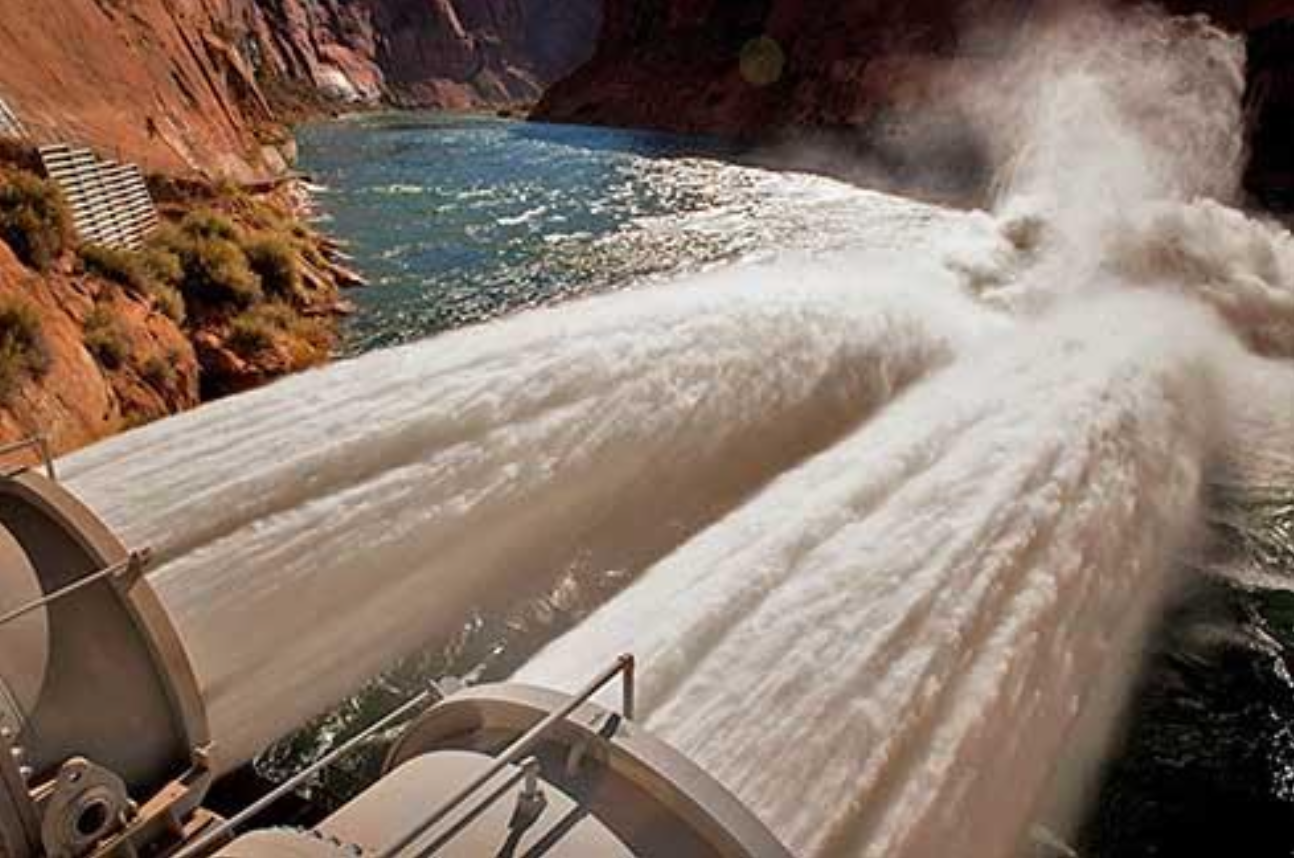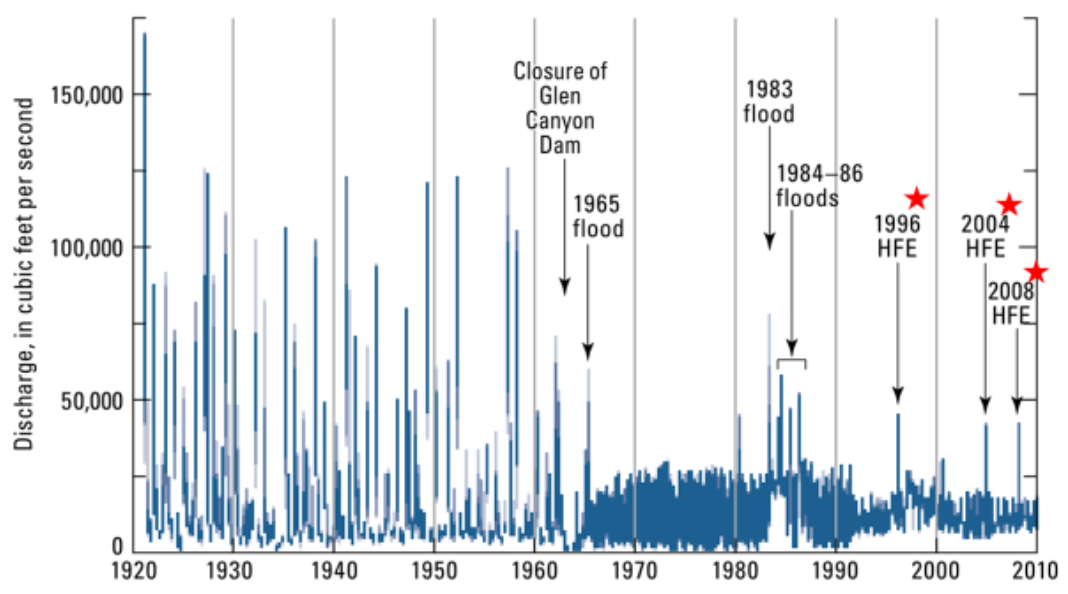Original Presentation by Easton White February 8, 2017
Large quantities of water are often difficult to interpret. Stating Glen Canyon Dam’s capacity as 26.2 Million Acre Feet doesn’t mean a whole lot beyond a guess along the lines of; well, that must be a lot of water. Thus when UC Davis PhD candidate Easton White describes the quantity of water jetted from the release valves at the bottom of Glen Canyon as, “a full Olympic sized pools worth every two seconds” the image is tangible; now that’s a lot of water, especially when releases last for hours to days (Figure 1). It’s these swimming pools, complete with volumes of sand, silt, clay, fish, nutrients, and all manner of small creatures that collectively make their way through Grand Canyon during a typical High Flow Experiment (HFE).

The canyon’s HFE’s are part of a management program to address impacts associated with Glen Canyon Dam. Prior to dam completion in 1963, sediment saturated outflows made their way down the confined thoroughfare of the canyon in great brown splays, giving the water’s their characteristic muddy hue. This mass of material did not endlessly just eject into the ocean, rather being deposited and eroded locally throughout the canyon in concert with the seasonality of floods and river flows. The dynamic balance of changing river states served to maintain landscape features, like sandbars, and riverine processes of critical importance to native wildlife species exalting in the murky waters. The canyon’s unique setting made it an Eden to a variety of specially adapted fish species found nowhere else.
Sadly, Mr. White laments describing current conditions, the situation for many of the canyon’s native fish is not as auspicious, finding themselves in decline, extinct, or extirpated from the canyon entirely. The humpback chub, a canyon native and species of interest, is one amongst others listed as endangered under the Federal Endangered Species Act. Not surprising a web of factors influences the prosperity of native fish, however altered hydrologic conditions and the presence of non-native fish are often cited as key culprits. Post-dam water flows significantly differ from historic conditions exhibiting less seasonal variability and a near absence of food events (Figure 2). The dam is also an extremely efficient barrier to the movement of sediment, evidenced by the clear waters tricking below its looming curvature. The much diminished volume of downstream sediment has resulted in deterioration of sandbars and alteration of many in-river processes to the detriment of native biota. Introduced non- native fish species prey and compete with natives often being better adapted to the altered river conditions. Several of these introduced species, rainbow trout in particular, have recreational benefits and are actively managed to maintain large populations. By the late 1980’s, impacts of the dam to natural and human-valued functions of the canyon were widely recognized and met with efforts by river managers to address concerns.

The HFE’s were identified as one option to address environmental impacts associated with Glen Canyon Dam. HFE’s involve planned dam releases mimicking historic canyon floods. While sediment movement and restoration of sandbars are the primary goals of the HFE’s, benefits to native and non-native fishes are of ancillary interest. The operative word in these controlled flows is “experiment”, as outcomes historically were and still are largely speculative. This speculative nature is best illustrated by the 1996 flood whose array of predicted outcomes for improved sandbar habitat and benefits to native species were found by post flood monitoring to be either unproven or wholly incorrect. Subsequent HFE’s have built upon observations from earlier experiments thereby tweaking the amount and timing of released water to achieve greater stability in replenished sandbars. This adaptive approach appears to be bearing fruit in sandbar abundance, but benefits for native fish are still inconclusive. Post flood monitoring has shown huge increases in non-native trout populations but either declines or unsettled results regarding the native humpback chub.
HFE’s are planned to continue despite the benefit to native fish being dubious. This lack of clarity appears to stem from a paucity of scientific study as well as limitations on HFE's due to infrastructure constraints at Glen Canyon Dam. Whether the impetus and ability to halt the decline and possible extirpation of native fish within the canyon exists despite institutional (i.e. objectives for hydro-power, trout management, and sandbar management) and operational barriers remains to be seen. When asked for comment Mr. White stated, “From a technical perspective, I think it is possible to re-focus efforts to address the declining native fish populations. However, I do not think this will happen for institutional and political reasons. This is unfortunate as under the Endangered Species Act of 1973 and subsequent court cases have greed that "It is clear from the [Endangered Species] Act's legislative history that Congress intended to halt and reverse the trend toward species extinction—whatever the cost".”
